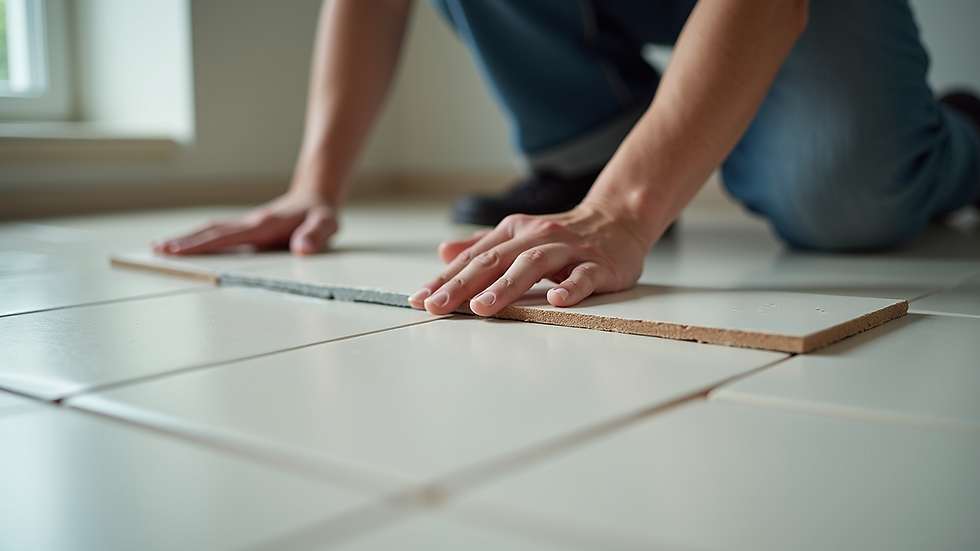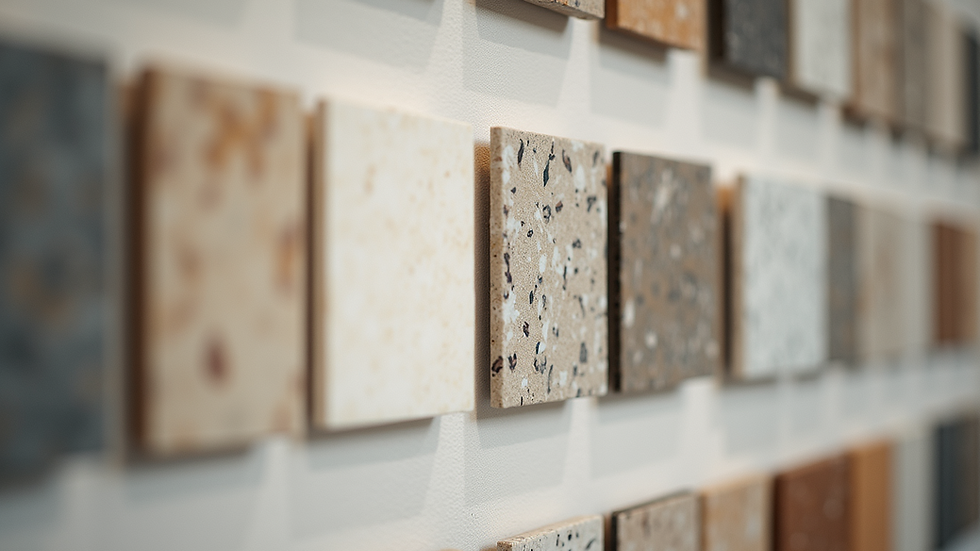The Process of Ceramic Tile Installation
- Sun Floor Installation

- Oct 13
- 4 min read
When I first decided to upgrade my floors, I knew ceramic tiles would bring a timeless charm and durability to my home. The process of laying ceramic tiles might seem daunting at first, but with a little patience and the right approach, it can be a rewarding project. Whether you’re refreshing a kitchen, bathroom, or commercial space, understanding the ceramic tile install process helps you make informed decisions and achieve beautiful results.
Understanding the Ceramic Tile Install Process
The ceramic tile install process is a journey that transforms a plain floor into a stunning surface. It involves several key steps, each requiring attention to detail and care. From preparing the surface to the final grout application, every phase plays a vital role in ensuring your tiles stay strong and beautiful for years.
First, you need to assess the area where the tiles will go. This means checking for any damage, unevenness, or moisture issues. A clean, flat, and dry surface is the foundation of a successful tile job. Next, you’ll plan the layout, deciding how the tiles will be arranged to maximize aesthetics and minimize cuts.
Once the groundwork is set, the actual installation begins. This includes spreading adhesive, placing tiles carefully, and using spacers to keep consistent gaps. After the tiles are set and the adhesive has cured, grout fills the spaces between tiles, sealing the floor and adding to its visual appeal.
Throughout this process, patience is key. Rushing can lead to uneven tiles or weak bonds, but taking your time ensures a professional finish. If you want to learn more about expert ceramic tile installation, Sun Floor Installation offers trusted services in the Tampa Bay area.

Preparing the Surface for Ceramic Tile Installation
Before you even pick up a trowel, the surface preparation sets the stage for success. I always start by removing any old flooring, debris, or dust. If the floor is uneven, I use a leveling compound to create a smooth, flat base. This step is crucial because even slight bumps can cause tiles to crack or pop loose over time.
If you’re working over a wooden subfloor, it’s important to reinforce it to prevent movement. Ceramic tiles are rigid and don’t flex well, so a sturdy base is essential. Sometimes, installing a cement backer board is the best solution. It provides a solid, moisture-resistant surface that supports the tiles perfectly.
Moisture is another factor to consider. Bathrooms and kitchens often have higher humidity, so using a waterproof membrane can protect your floor and prevent damage. Taking these precautions early saves headaches down the road.
What do you put down before ceramic tile?
One of the most common questions I get is, “What do you put down before ceramic tile?” The answer depends on your existing floor and the room’s conditions. Generally, the layers beneath the tile include:
Subfloor - This is the structural base, usually plywood or concrete.
Underlayment - For wood subfloors, a cement backer board or an uncoupling membrane is installed to provide stability and prevent cracks.
Thinset mortar - This adhesive bonds the tile to the underlayment.
Waterproof membrane (optional but recommended in wet areas) - Protects against moisture penetration.
For example, in my bathroom renovation, I installed a cement backer board over the wooden subfloor, then applied a waterproof membrane before laying the tiles. This layered approach gave me peace of mind that my floor would last.

Laying Out and Installing the Tiles
Once the surface is ready, it’s time to plan the tile layout. I like to start by measuring the room and marking the center point. This helps create a balanced look, especially in square or rectangular rooms. Dry-laying a few tiles along the center lines can show how the pattern will look and where cuts will be necessary.
When you’re ready to install, spread thinset mortar with a notched trowel. The size of the notches depends on the tile size, but the goal is to create even ridges that help the tile stick firmly. Press each tile into place, giving it a slight twist to ensure good contact.
Using tile spacers keeps the grout lines consistent and neat. I recommend checking your work frequently with a level to avoid uneven tiles. If you need to cut tiles to fit edges or corners, a wet saw is the best tool for clean, precise cuts.
After placing all the tiles, let the mortar cure for at least 24 hours. This waiting period is like letting a cake bake - patience ensures the best results.

Grouting and Finishing Touches
Grouting is the final step that brings everything together. Once the mortar has set, remove the tile spacers and mix your grout according to the package instructions. Using a rubber float, spread the grout diagonally across the tiles, pressing it into the gaps.
After applying grout, wipe the tiles with a damp sponge to remove excess and smooth the lines. It’s important to rinse the sponge frequently and avoid pulling grout out of the joints. Let the grout cure for a few days, then apply a grout sealer to protect against stains and moisture.
Finishing touches include cleaning the tiles thoroughly and installing baseboards or trim to cover the edges. These details add polish and help protect the tile edges from damage.
Bringing Your Space to Life with Ceramic Tiles
Embarking on a ceramic tile install process is like painting a canvas with durable, beautiful strokes. Each step, from preparation to finishing, builds toward a floor that not only looks stunning but stands the test of time. Whether you’re refreshing a cozy kitchen or outfitting a busy commercial space, the right approach makes all the difference.
If you want to ensure your project is handled with expert care, consider reaching out to professionals who specialize in ceramic tile installation. Their experience can save you time and provide peace of mind.
With a little effort and attention, your new ceramic tile floor will be a welcoming foundation for years to come. It’s more than just flooring - it’s a transformation that invites warmth, style, and lasting quality into your space.




Comments